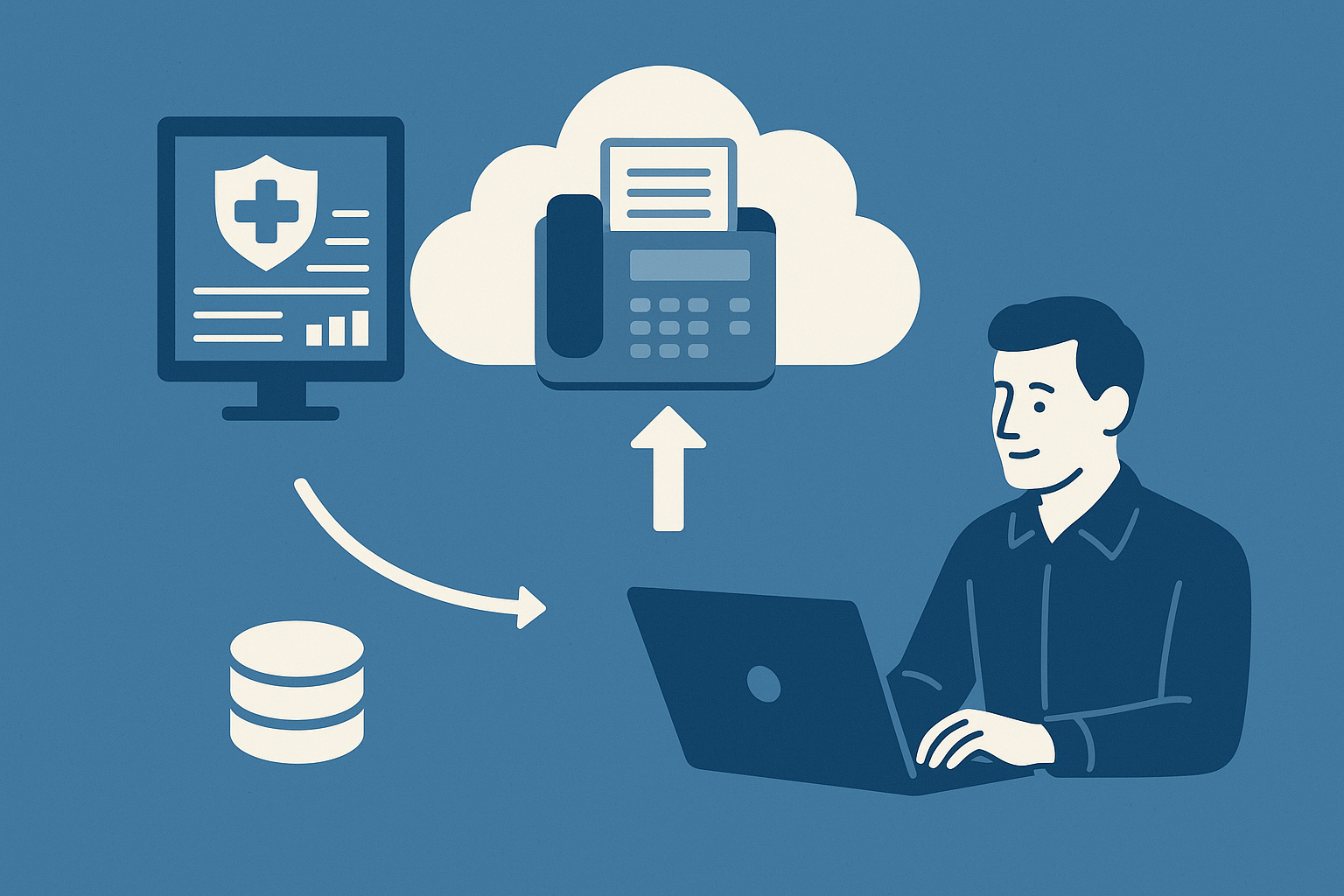
Fax is deeply (perhaps permanently) embedded in regulated industries such as healthcare and finance.
But traditional fax tools are cumbersome, at best, to integrate with an EHR/EMR or other key systems.
Our fully managed Private Fax Cloud® is designed for fax API integration plus native EHR fax connectors, delivering HIPAA compliance faxing with zero on-prem infrastructure.
Removing EHR Fax Friction
The goal isn’t to tweak outdated EHR document workflows at the margins. It’s to migrate them to technology that’s sleeker, simpler, more cost-effective, easier to integrate, and an overall better balance between cost pressures and compliance demands.
- Reduce costs by eliminating dedicated hardware and telephony.
- End failed faxes, whether inbound or outbound.
- Tighten security and compliance with end-to-end encryption and granular audit trails.
Simple, Proven Integration Techniques
As a native integration, there’s no toggling between interfaces. Just quick, clean, secure document exchange within your existing workflows.
Behind the scenes, most cloud fax–EHR integration use one of two techniques:
- A native connector supported by the fax service developer and certified by the EHR vendor. This is the norm for major vendors like Epic and Veradigm (Allscripts) in particular.
- A REST API for custom integrations. Even though this approach isn’t “plug-and-play,” it’s relatively simple, quick, flexible, and well understood.
Certain integrations—especially with older EHR vendors or legacy desktop software—may require other integration techniques like a SOAP API, COM API, or OpenText’s facsimile command language (FCL). These aren’t universally supported by cloud fax services, so all possible integrations must be accounted for before selecting a fax vendor.
Three Key Use Cases
Possible use cases are virtually endless. However, we’ve seen three scenarios stand out in terms of demand from clients as well as speed to value.
Automated inbound routing
What: Incoming faxes are routed directly to the appropriate EHR record or other repository.
How: Typically native or API integration, with business rules that evaluate the sending number, metadata, or even text captured via OCR.
Benefit: Precise, real-time information delivery that makes faxes feel natively digital, while human intervention is reduced to exception handling.
Direct outbound faxing from core applications
What: Users send faxes directly out of core business systems without switching screens, let alone handling paper.
How: User click or application event triggers fax document creation, sending, and logging.
Benefit: Near-instant outbound faxing that’s as easy as email.
Fax-to-email for remote teams
What: Remote and global teams send and receive faxes like their in-office peers, subject to all the same security measures.
How: Encryption, multi-factor authentication, and role-based access control enforce enterprise security for the entire user base.
Benefit: Consistently tight security and PHI management regardless of user location or devices.
Needless to say, these are simplistic and generalized examples. Precise steps and business logic are customized during the implementation process, and can be modified at any time.
Today, cloud fax meets or exceeds on-prem reliability and security, but with far more compelling costs and flexibility. It’s no wonder we see more and more IT teams moving their EHR fax integrations to cloud services every year.
Whether you’re solving a specific workflow pain point or tasked with broader digital transformation, we’re here to help you modernize faxing quickly and painlessly.
For a workflow analysis or technical discussion with a solutions engineer, please contact us today.
